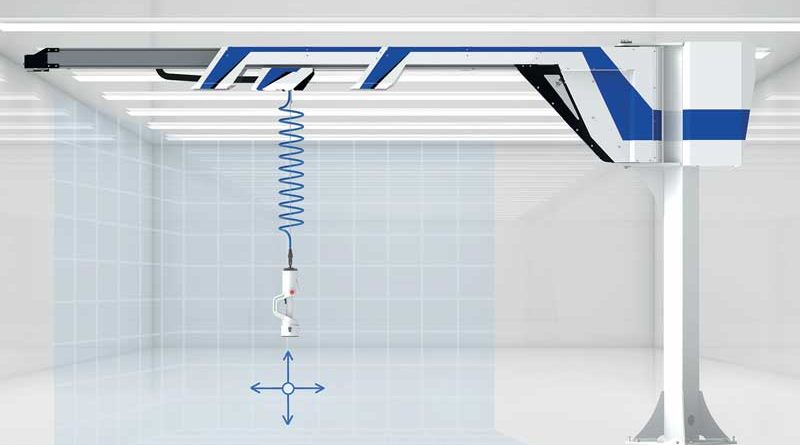Collaborative Handling Combines Speed And Precision
J. Schmalz has developed a new lifting system with the collaborative rope balancer, which enables quick handling as well as precise positioning of the workpieces. The rope balancer is ergonomically designed, easy to operate and equipped with intelligent functions for controlling and monitoring the handling process as well as for networking the device.
di Andrea Pascoli
The collaborative rope balancer Seilbalancer, developed by Schmalz, is IoT-compatible and intuitively operable in all three axes. With the collaborative rope balancer, manual lifting tasks can be partially automated. It combines dynamics with precision: the intelligent handling system is able to pick-up and transport quickly as well as deposit loads accurately, for example during joining or assembly processes. Loads of up to 80 kilograms can be moved and decelerated with little effort, without the risk of overshooting the load. Pick-up and deposit points as well as work areas and travel speeds can be defined via software. The user can operate the collaborative handling system intuitively in all spatial dimensions with just one hand using the control handle. Different system properties can be set directly on the control handle, for example one of three different speeds. LEDs all around show the current operating status at a glance. The rope balancer is available with a jib length of three to 4.5 meters and a crane column of two to four meters in height.
The device is ready for integration in a digital process landscape
Thanks to automatic gripper detection, the rope balancer knows which type of gripper is connected.
The device reads out the corresponding parameters automatically – for example, the hours worked, the maximum load or the specified safety limits of the grippers.
Schmalz has designed the new handling system to meet the growing
demands for digitization: Equipped with various sensors, it captures status and performance data that can be made available when integrated into a digital process landscape. This will enable condition monitoring, predictive maintenance, remote monitoring and the read-out of operating data and statuses to optimize the overall system. Any errors are reported by the system directly to the display in the control handle.

